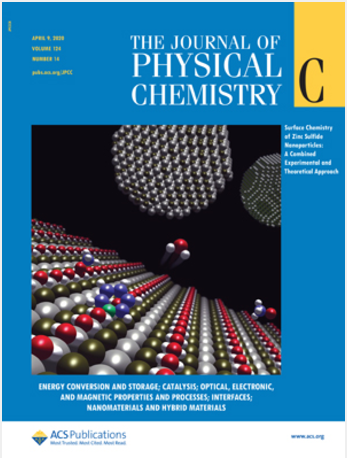气相与液相硅基化是抑制氧化硅衬底上薄膜原子层沉积(ALD)的一种方法
IF 3.3
3区 化学
Q2 CHEMISTRY, PHYSICAL
引用次数: 0
摘要
利用x射线光电子能谱(XPS)评价了N-(三甲基硅基)二甲胺(TMSDMA)对氧化硅表面进行硅基化处理对原子层沉积(ald)钝化的效果。研究确定,这种硅烷化确实阻断了ALD前体反应的硅烷醇(Si-OH)成核中心,从而抑制了膜的生长,但只是暂时的;经过几个ALD循环后,沉积变得明显。通过在等离子体增强化学气相沉积(PE-CVD)和化学(RCA)处理Si(100)晶圆制备的两种SiO2表面上测试这种化学性质,得出结论,初始衬底的性质在硅基化或ALD阻断过程中不起关键作用。另一方面,沉积的材料确实有所不同:TiO2薄膜的生长可以在近10个ALD循环中受阻,而HfO2在不到5个ALD循环后就开始在表面积聚。此外,二氧化钛在硅化表面的稳态沉积速率低于未处理的衬底,而HfO2不仅不是这种情况,而且新的薄膜实际上可能以3D纳米结构生长。这项工作的关键发现之一是硅基化可以使用气相或液相处理进行。结果发现,在这两种情况下,硅基化的程度和对随后ALD的抑制是相当的,但确定气相法更清洁,沉积的碳污染物更少。这种基于硅基的ALD抑制预计是选择性的,相对于底物的性质,因此对区域选择性ALD (AS-ALD)工艺的设计有用。本文章由计算机程序翻译,如有差异,请以英文原文为准。

Gas- versus Liquid-Phase Silylation as a Way to Inhibit Thin-Film Atomic Layer Deposition (ALD) on Silicon Oxide Substrates
The effectiveness of silylation treatments of silicon oxide surfaces using N-(trimethylsilyl)dimethylamine (TMSDMA) for the passivation of atomic layer depositions (ALDs) was evaluated by using X-ray photoelectron spectroscopy (XPS). It was determined that such silylation does indeed block the silanol (Si–OH) nucleation centers where the ALD precursors react and therefore inhibits film growth, but only temporarily; after a few ALD cycles, deposition becomes evident. By testing this chemistry on two types of SiO2 surfaces, prepared by plasma-enhanced chemical vapor deposition (PE-CVD) and by chemical (RCA) treatment of Si(100) wafers, it was concluded that the nature of the initial substrate does not play a crucial role in the silylation or ALD blocking processes. The material being deposited, on the other hand, does make a difference: TiO2 film growth can be blocked for almost 10 ALD cycles, whereas HfO2 starts building up on the surface after less than 5 ALD cycles. Moreover, the steady-state deposition rate reached for TiO2 on the silylated surfaces is lower than that seen for the untreated substrate, whereas with HfO2 not only is that not the case, but the new films may in fact grow as 3D nanostructures. One of the key findings of this work is that the silylation can be carried out using either gas- or liquid-phase treatments. It was found that the extent of silylation and the inhibition of the subsequent ALD were comparable in both cases, but the gas-phase method was determined to be cleaner and to deposit less carbon contaminants. This silylation-based ALD inhibition is expected to be selective with respect to the nature of the substrate and therefore useful for the design of area-selective ALD (AS-ALD) processes.
求助全文
通过发布文献求助,成功后即可免费获取论文全文。
去求助
来源期刊

The Journal of Physical Chemistry C
化学-材料科学:综合
CiteScore
6.50
自引率
8.10%
发文量
2047
审稿时长
1.8 months
期刊介绍:
The Journal of Physical Chemistry A/B/C is devoted to reporting new and original experimental and theoretical basic research of interest to physical chemists, biophysical chemists, and chemical physicists.
 求助内容:
求助内容: 应助结果提醒方式:
应助结果提醒方式:


